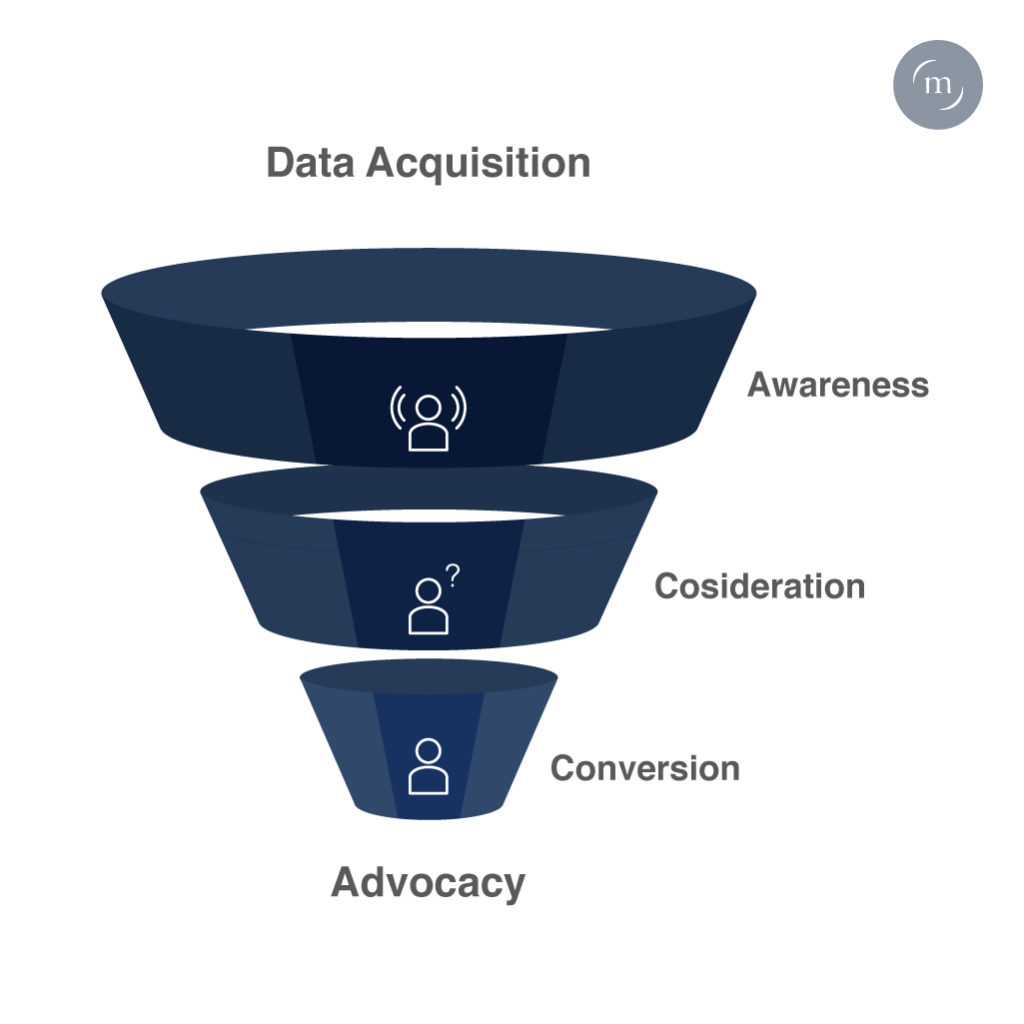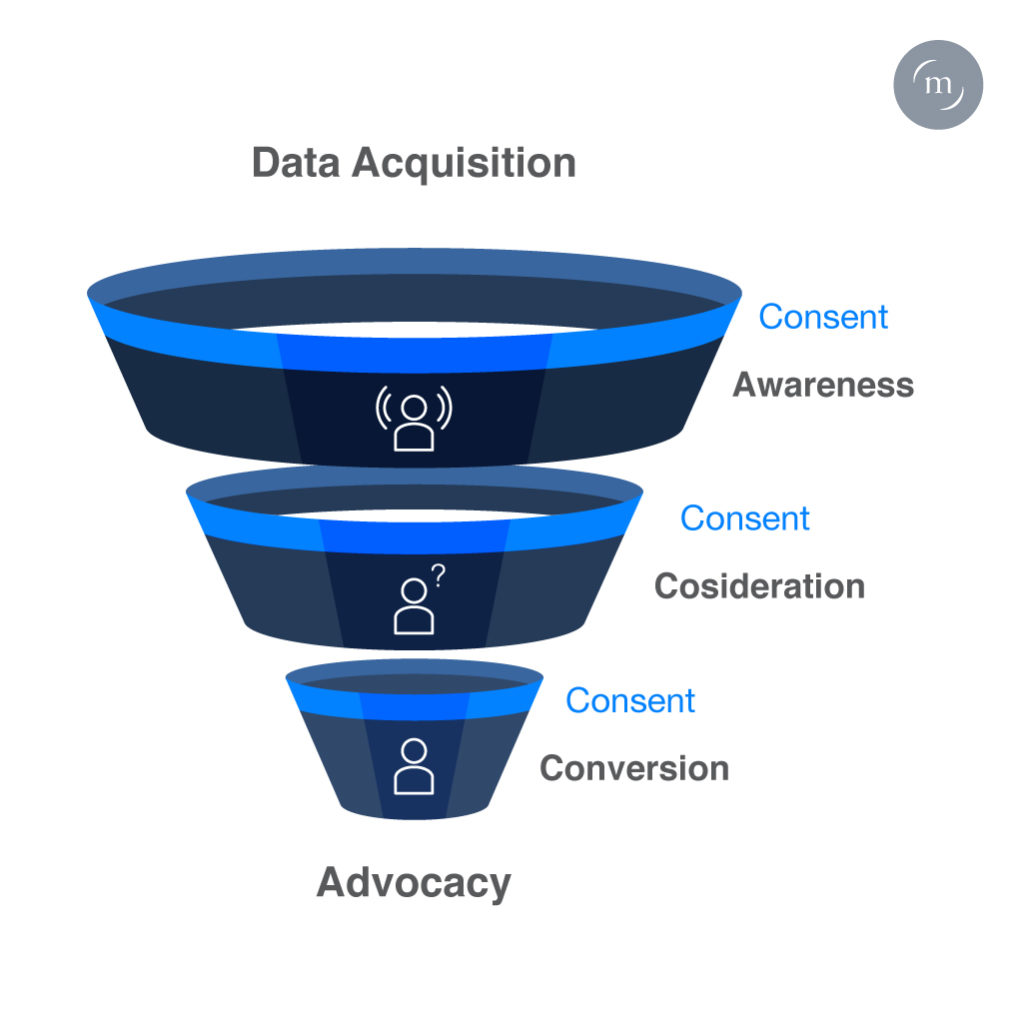When it comes to knowing your customer journeys that are fragmented within the variety of digital platforms, identifying your marketing funnels from top-to-bottom isn’t as simple as it used to be anymore; especially when the customers are hopping around the internet at the stages of getting to know your brands & products. More essentially, one of the newest obstacles foreseen by marketers in efforts of connecting consumer insights throughout the digital journeys is data privacy restriction that has already come into significant role around the world, considering “Consent” as the top funnel.
THE TRADITIONAL MARKETING FUNNELS

- Upper Funnels – occurs when creating awareness of the brands towards your target audiences or engaging with them to initiate general interests of your brands or products; e.g. Search Engine Optimization or Generic Display Advertising.
- Middle Funnels – identified as consideration or leads level between brand and your customers, it occurs when brands are trying to persuade or convince the consumers against other considerations i.e. competitors.
- Lower Funnels – consists of the events that ensure the conversion of brand leads into customers and that loyalty or advocacy schemes could eventually kicks off in strengthen brand reputation afterwards.
As detailed as it gets throughout the customer journeys, digital privacy has become one of the biggest concerns not only for governments or consumers, but it is undeniable also for marketers in efforts of the hyper-personalized communications. This dictates the transparency in data acquisition at the very first contact of each touchpoint between brand and customers. Inevitably, consent is now a must as “the very top funnel of all”.
CONSENT(S) THROUGH THE MARKETING FUNNELS

- Top Funnel – initial consent will be the “Norm” for every-single-set of digital marketing funnels as it involves directly into the collection and processing of personal data, either directly or indirectly.
- Upper Funnels – awareness-level tagging could now kick in as the consent (or any other applicable legal basis for personal data collection) is guaranteed.
- Middle Funnels – occur where the consumers are identified as prospects or undergoing their considerationsbetween your brand and competitors’.
- Lower Funnels – are addressed under the occurrences of brand conversion depending on objective metrics of marketers.
- Intercepted Consent – throughout the funnels as an individual’s journey may shift across different touchpoints, consent must be acquired prior to any data collection of each touchpoint categories; shifting from device-based to account-based or acquiring email address from an anonymous brand visitor, for instances.
This will be an opportunity for marketers that are well prepared to utilize trust as another essential metric as consumer’s digital literacy grows overtime. Moreover within respects of this new trust metrics, UX/UI designers will now have to work evermore closely with marketers to redesign and further optimize all customer touchpoints to ensure seamless experiences despite the new requirements of data privacy; or else brands will not be able to collect data without customer’s trust. As consequences, the proper privacy management brings forward advantages only for those who could truly utilize consent models that give businesses the optimum balance between data privacy and quality, this will be a new order in the digital transformation era as the concept of “Trust = Loyalty”.




